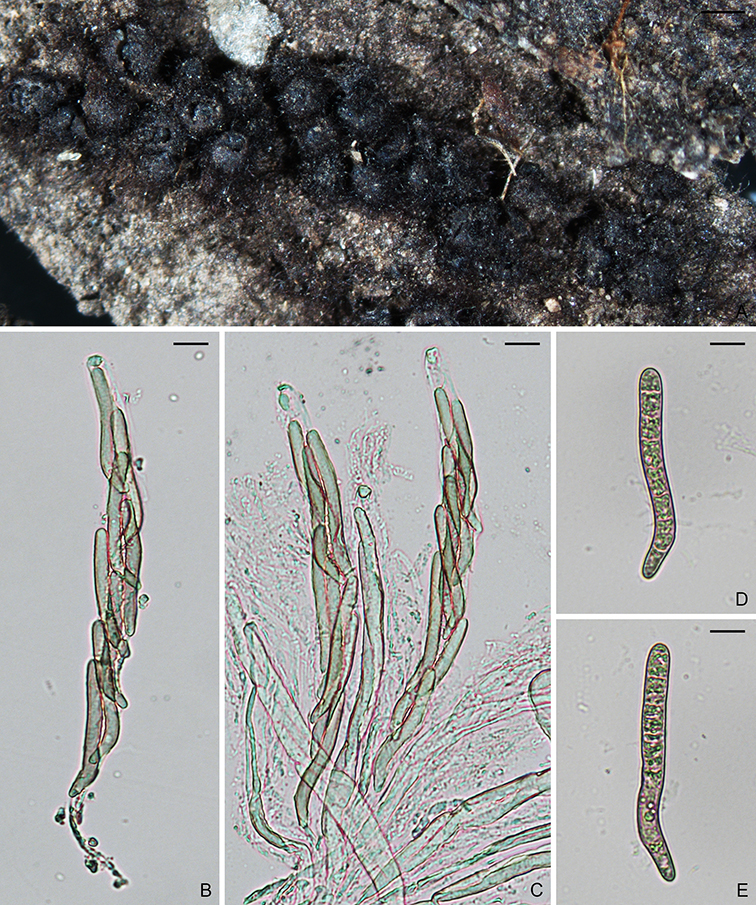
Figure. Ceratosphaeria grandis (BPI625030). A. Ascomata. B–C. Asci. D–E. Ascospores. Scale bars: A = 500 µm; B–C = 20 µm; D–E = 10 µm.
Ceratosphaeria grandis Boud., Bulletin de la Société Mycologique de France 18: 143, tab. VII. fig. 2 (1902).
MycoBank: MB249855.
Ascomata perithecial, superficial, gregarious, ovoid to obpyriform, dark brown to black, 350–550 µm diam, covered with flexuous, thin-walled hairs. Paraphyses septate, hyaline. Asci 8-spored, unitunicate, clavate, 310–340 × 24–32 µm, with a refractive ring. Ascospores 2–4-seriate in ascus, cylindrical, sigmoid or geniculate, 5–6-septate, not constricted at septum, hyaline to yellowish, smooth, 55–75 × 5–7.5 µm. Asexual state unknown.
Typification: Unknown.
Gene sequences: Unknown.
Specimens examined: USA, California, Green Valley Falls, Solano County, on dead wood of Quercus agrifolia, 12 Feb. 1953, L. Bonar, BPI625030, BPI625031.
Hosts/substrates: On dead wood.
Distribution: France, USA (California).
Copyright 2022 by The American Phytopathological Society. Reproduced, by permission, from Luo, J., and Zhang, N. 2022. The Rice Blast Fungus and Allied Species: A Monograph of the Fungal Order Magnaporthales (https://my.apsnet.org/APSStore/Product-Detail.aspx?WebsiteKey=2661527A-8D44-496C-A730-8CFEB6239BE7&iProductCode=46826). American Phytopathological Society, St. Paul, MN.